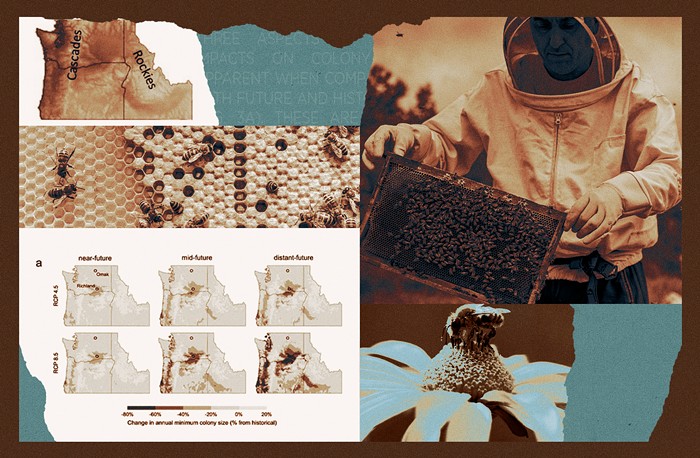
More on Carl Sagan’s Pale Blue Dot: Voyager 1’s iconic photo of Earth from 6 billion kilometers away, which prompted astronomer Carl Sagan to famously describe our home as a “pale blue dot,” has played an outsize role in the secular conception of humanity’s place in the universe. The image poignantly underscores the vastness of space, the fragility of our planet, and our supreme loneliness as the sole sentient beings on the only living world we know of.
But, as it turns out, that same pale blue light may someday be the key to finding our nearest neighbors. In a NASA-funded study published earlier this year, a team at the University of Washington demonstrated that aspects of Earth’s color spectrum can only be attributed to the influence of life, or, specifically, the excess oxygen plants produce. While Earth’s overall light-blue cast can be closely mimicked by uninhabitable “exoplanets,” a subtler analysis shows a unique signature of this free oxygen chemically reacting with other molecules in our atmosphere. This reaction precludes the opaque haze visible in images of gaseous planets like Venus or Saturn, and thus might someday provide the first evidence of another life-supporting planet—a second “mote of dust suspended in a sunbeam.”
Genomic Data Reveals Natural Selection for Immune Response in Northwest Coast Natives: Previously, I highlighted research revealing a population bottleneck and major loss of genetic diversity in pre-Columbian indigenous groups. While this bottleneck was partly the result of direct contact/conflict with Europeans (from warfare and widespread enslavement), an even larger source of mortality was exposure to foreign European diseases, which were able to blossom to epidemic proportions because Amerindian groups had no prior immunity to them.
Now a team of researchers led by John Lindo of the University of Chicago has used exome data—or DNA sequences from “coding” regions of the genome, which get transcribed into RNA and then translated into proteins—to explore the influence of these epidemics on immune system function in Native populations in the Pacific Northwest. Because the exome controls traits in organisms that have a direct impact on their fitness (their ability to survive and reproduce), changes in the frequency of particular variants can be attributed to the effect of natural selection. The reasoning goes like this: If certain individuals carry a copy of a gene that confers greater ability to fight off disease during an epidemic, it’s more likely they will survive to reproduce and pass on DNA sequence coding for that particular copy, which you’d expect to increase in frequency over time.
Lindo and his colleagues showed just that with a study design they evocatively describe as a “time transect,” sequencing the exomes of ancient and modern First Nations individuals of the Prince Rupert Harbour region of British Columbia, Canada. After identifying a 57% decline in effective population size (a metric indicating, crudely, the number of breeding individuals in a population), they identified an increase in the frequency in a number of immune system-related genes correlated with the onset of European-borne epidemics in the Northwest in the 1800s. What this simply means is that the injustice of colonization and random cruelty of disease ended up driving human evolution.
You can read a pre-print of their manuscript here. (Pre-prints are a method for scientists to publish their results directly to the internet while waiting for traditional peer review, and perhaps the subject of a future column.)
The Birds Come to Bothell: In a scene in Alfred Hitchcock’s classic horror film The Birds, protagonist Melanie calls her father to describe a dark turn of events at a local elementary school:
“Daddy, is there a difference between crows and blackbirds?... I think these were crows, hundreds of them... Yes, they attacked the children. Attacked them!”
This has luckily not yet happened in Bothell, despite the more than 10,000 crows that have begun roosting there each spring in recent years. The crows gather in such large numbers to take advantage of safety from predators and the concentration of food and other resources urban areas provide. They have also proven a boon to researchers at both nearby University of Washington campuses, who have, among other things, provoked them while wearing Dick Cheney masks.
Science Event of the Week: The term “bioblitz” refers to a rapid, comprehensive inventory of all the species of plants and animals that live in a particular area. While typically employed by field biologists in regions where baseline biological knowledge is poor (such as the Amazon), you can participate in a bioblitz closer to home and without risking dengue fever as a volunteer at the UW Arboretum on May 6 and 7 this week. There will be an orientation Friday evening, so be sure to register ahead of time.














